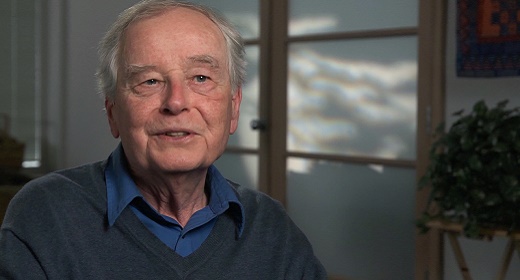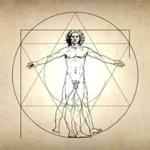by Karin Arndt, Ph.D: Solitude as psychospiritual recovery project…
“You wish psychoanalytic advice? Go gather bones.”
In her groundbreaking book Women Who Run with the Wolves, Jungian analyst Dr. Clarissa Pinkola Estés encourages women to get to work on a recovery project. That project revolves around the process of “gathering bones”: remembering and reviving parts of themselves which have lain dormant in a culture that fails to support women’s psychospiritual vitality and liberation. Estés asserts that, under the current cultural regime, something foundational to a woman’s being becomes lost and needs to be recovered in order for her to feel fully alive. Missing contact with this fundamental and ancient layer of her being – the realm of the “wild feminine,” as Estés puts it – a woman feels spread too thin and not quite comfortable in her own skin. Her daily social performances (including that of woman) become robotic and superficial and are ultimately unsustainable. Her existence lacks juice.
Many women know that something’s missing and sense a call toward larger, more fecund life, but they don’t know what to do. And of course they don’t. Our culture rarely names the problem and doesn’t provide guidance around how and where to get real sustenance. Estés advises that dried out women need to “do the work of turning toward home” (p. 288). She makes the point that this process of homecoming can happen in small ways in the midst of everyday life, such as while daydreaming or sitting in the sun or listening to music. Through these activities – these brief time outs – we take small sips from the well. But sometimes a much greater effort is needed. Sometimes we just have to GO.
In describing his reasons for carrying out his solitary experiment at Walden Pond, Henry David Thoreau explained that he “wanted to live deep and suck out all the marrow of life… to put to rout all that was not life, to cut a broad swath and shave close.” (p. 80-81) Thoreau went to the woods to gather bones. He was in recovery mode.

The radical simplification of his existence and ample time spent in solitude helped him recover something elemental that he felt disconnected from while living amidst 19th century society. The practice of intentional solitary retreat, whether for several days or several years, has long been carried out by individuals to help them feel more connected to themselves, to nature, and to the Divine. Far from simply serving as a relaxing escape from life’s demands, solitary retreat can foster something far more profound and meaningful. It can be a vehicle for homecoming.
Solitude has historically been a male luxury. Think of the quintessential solitary and you will probably conjure up an image of Thoreau or perhaps Thomas Merton or maybe some old Buddhist monk (male, no doubt). Generally speaking, our culture has neutral or positive associations to male solitude, while female solitude tends to evoke images of witches, “spinsters,” and “madwomen in the attic”: women to be either pitied or feared. Indeed, female solitude tends to be viewed as unnatural, psychopathological, or inherently selfish. For so many reasons – economic, cultural, religious, psychological – women over time have lacked access to and permission to practice solitude.
Yet, “in order to converse with the wild feminine, a woman must temporarily leave the world and inhabit a state of aloneness in the oldest sense of the word,” according to Estés (p. 316). I read this to mean that women must find a way to retreat from the everyday interpersonal world in order to recover that which has been repressed or thwarted in the process of becoming an adult – and particularly a woman with all its compulsory performances and bodily disciplines – in this culture. A hermitage or hut-style retreat can serve as a vehicle for this recovery. Memories, feelings, sensations, and desires resurface or arise freshly in the deep silence. A new experience of the body may become possible in the absence of mirrors and the male gaze. A wilder layer of the mind can reawaken through sustained contact with the natural world outside the walls of the hut. And a child-like sense of wonder and enchantment may be restored, if only for brief moments of time, as thinking quiets down and more profound modes of listening and seeing become possible. These are all forms of homecoming.
For a woman to claim a hut of her own is a radical, countercultural act, even in – perhaps especially in – this post-postmodern age. But to claim a hut of your own, and then to practice sustained solitary retreat within its walls, is not easy. It’s not easy to take leave of all the familiar roles, habits, routines, and mirrors that serve to keep your sense of self firmly in place and to confront the silence and emptiness of the hut. It’s not easy to confront yourself as is, without the usual distractions that normally steal your attention away. The stripping away of the outer self – of the persona, or social mask – in order to contact the bones, can be a painful process. Indeed, Catholic theologian Henri Nouwen referred to solitude as the “furnace of transformation” (p. 25), the “place of conversion, the place where the old self dies and the new self is born, the place where the emergence of the new man and the new woman occurs” (p. 27). Far from simply serving as a place to rest and hide out, the hut can serve as a container for a psychological death and rebirth process. The person who enters the hut is rarely the same as the one who leaves it behind.
As a clinical psychologist, I believe in the talking cure and in the power of the therapeutic relationship to fuel psychological change. But I also believe in the power of silence and a certain kind of aloneness to foster other kinds of gains, gains that perhaps can only be cultivated outside of interpersonal relationship. And just as there is a spectrum of healthy to unhealthy forms of interpersonal relating, I believe there is a spectrum of healthy to unhealthy forms of aloneness. Many mental health professionals have fallen into the trap of conflating solitude with alienation and isolation and consequently viewing all forms of aloneness as unhealthy. We need to do better than that – for the sake of our clients, and ourselves.
Solitary retreat is a luxury and a practice that is not appropriate for all people in all phases of life. Yet for many of us, it may provide access to the kind of psychospiritual nutrition we’ve long hungered for. By entering the hut, we may be granted access to a more profound form of refuge. We may start to remember what we’ve forgotten. We may begin to gather up the bones that were lost along the way.










































